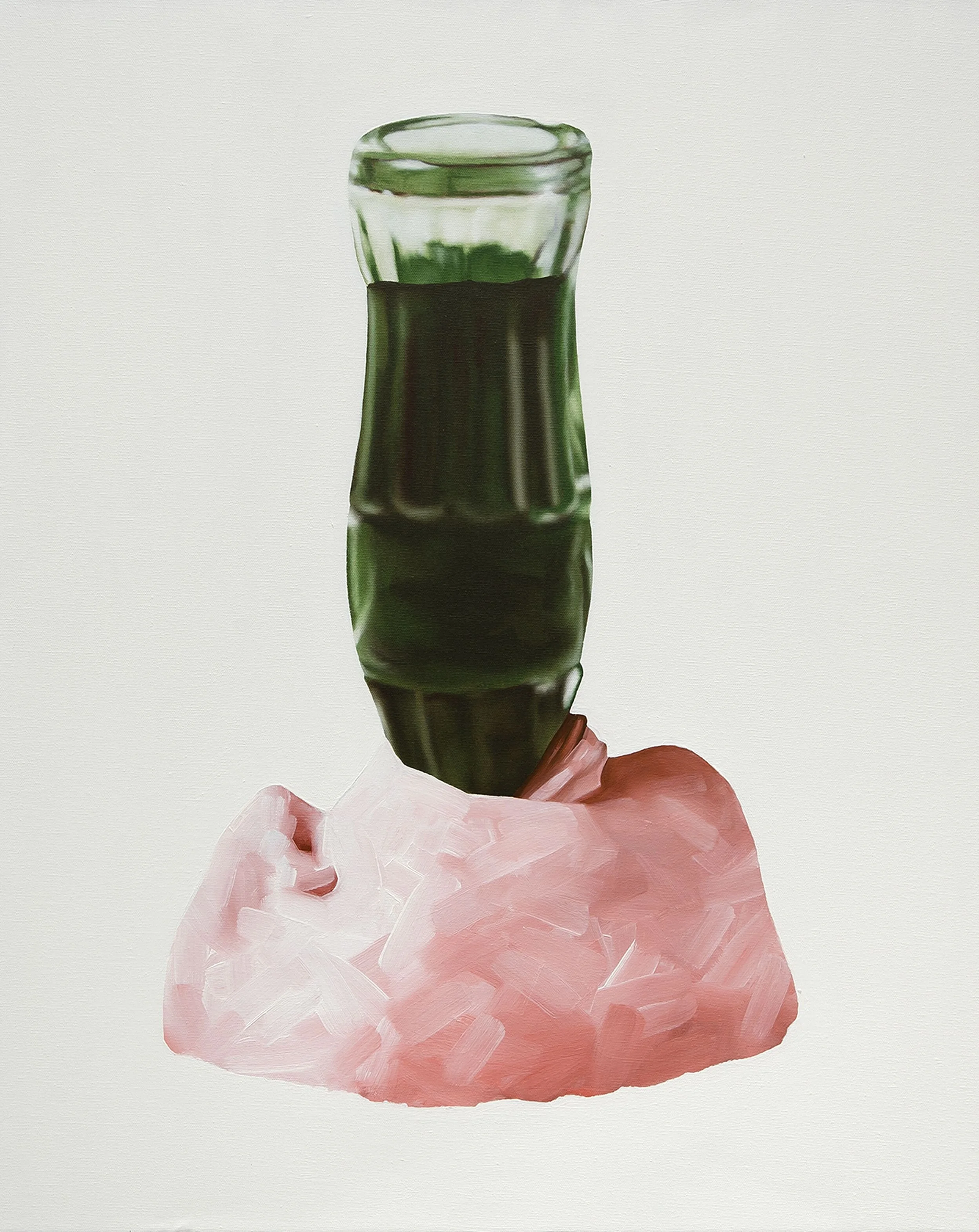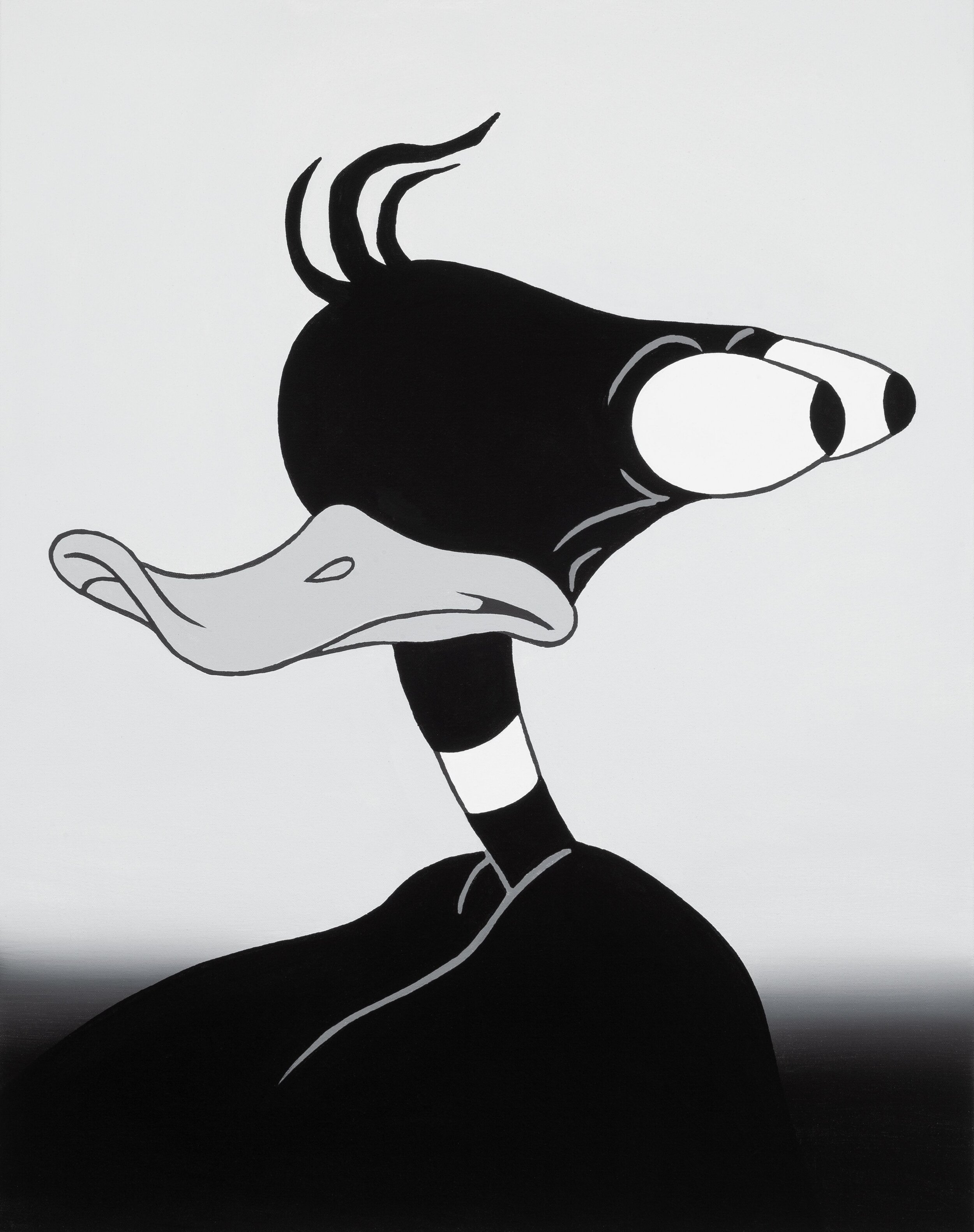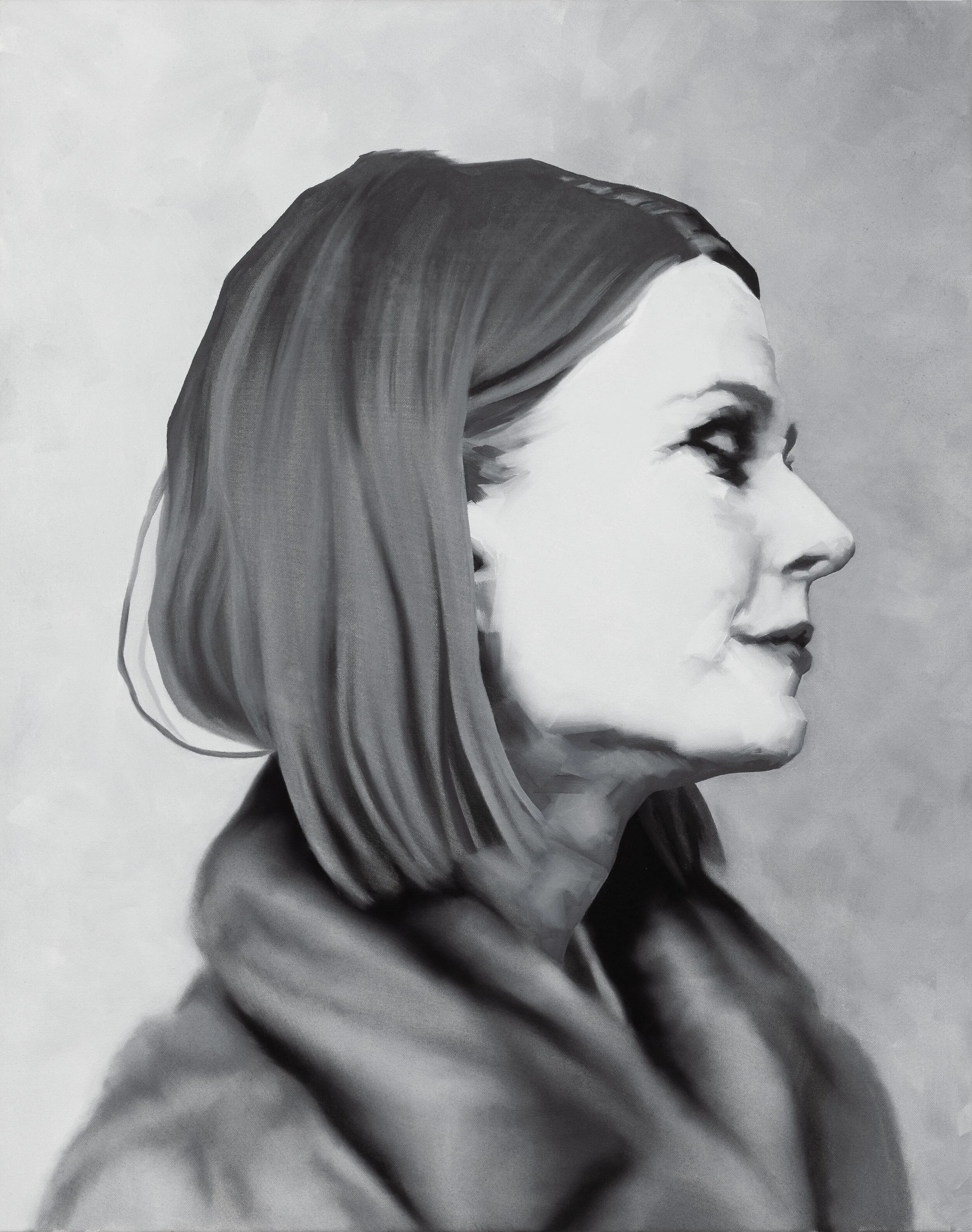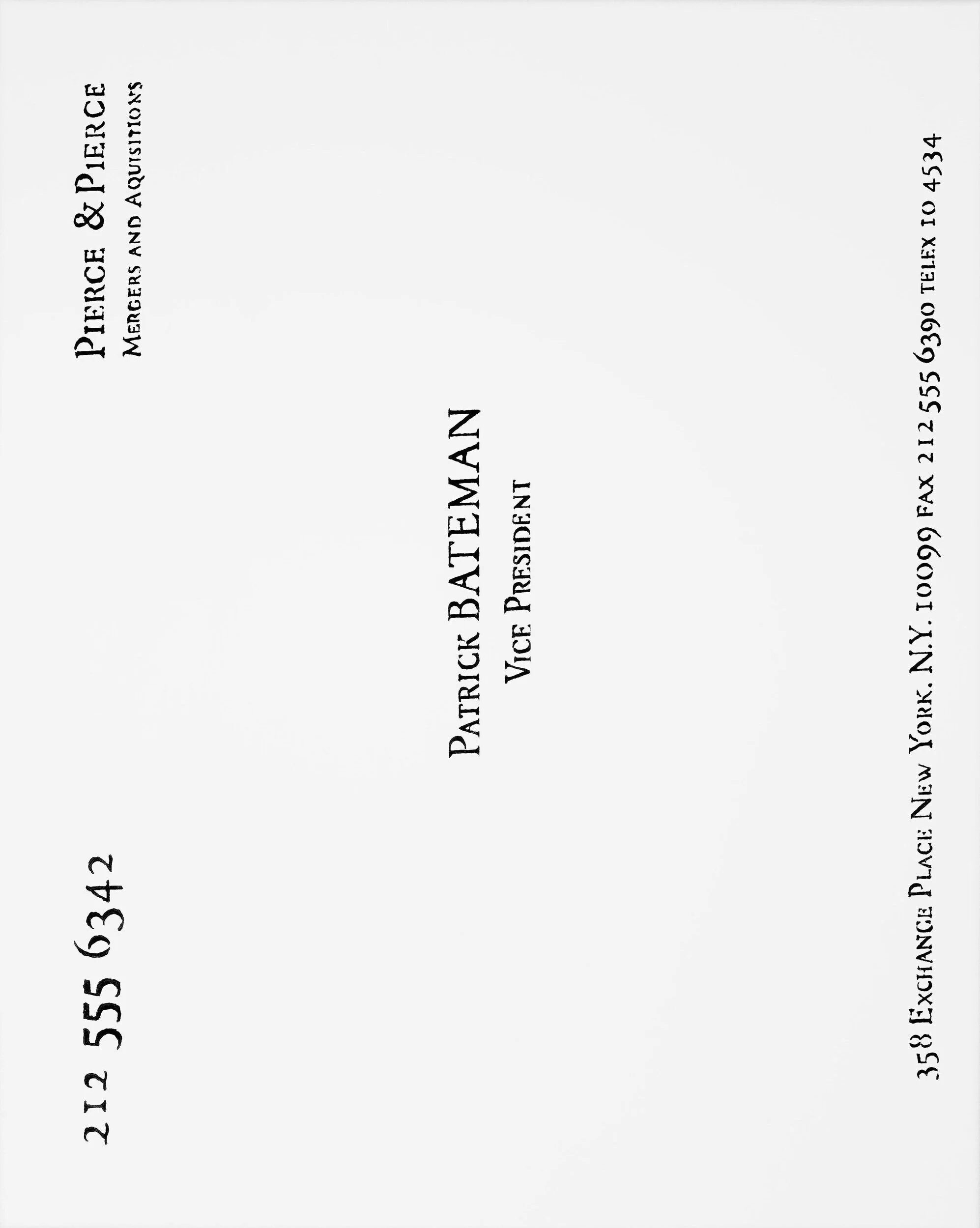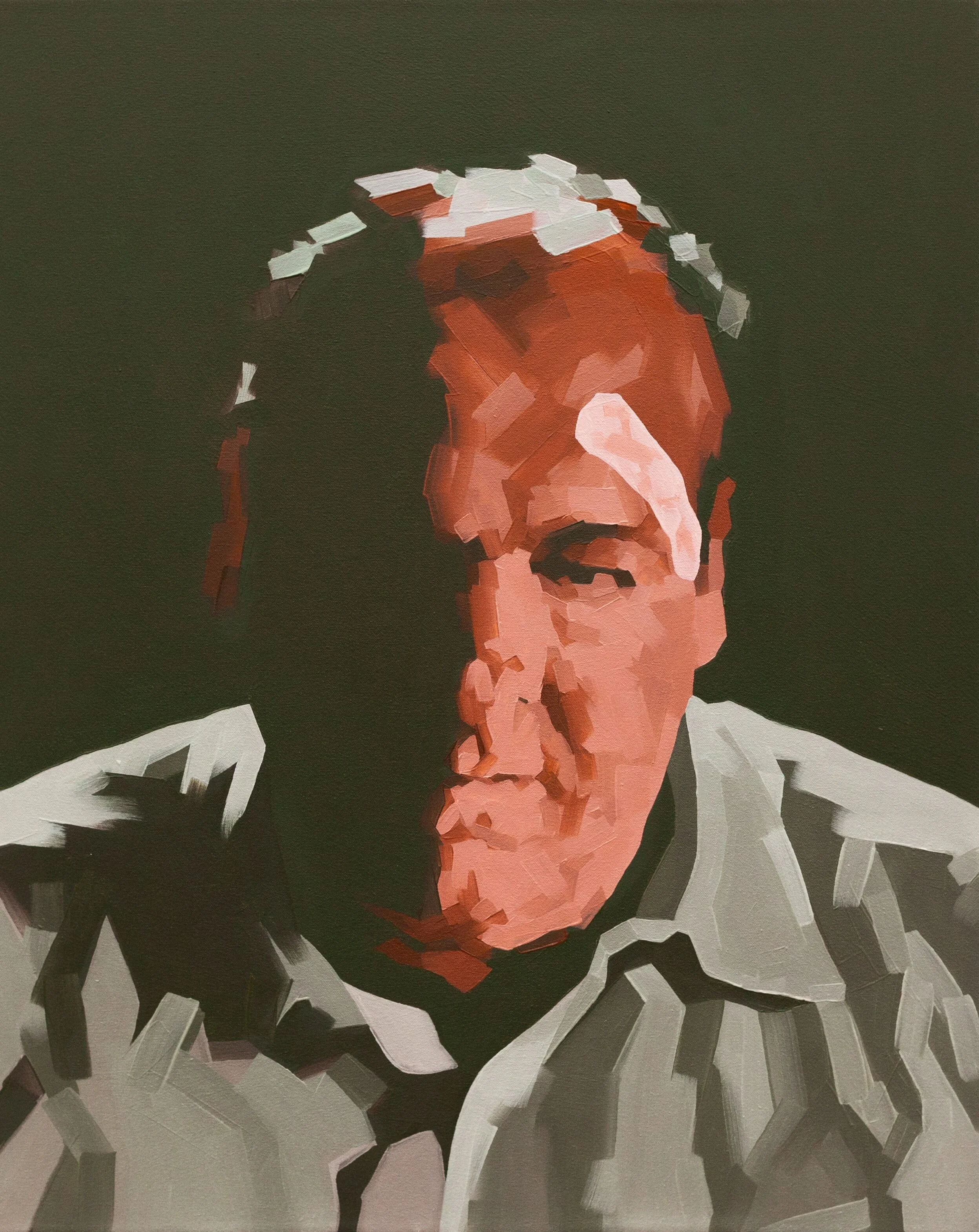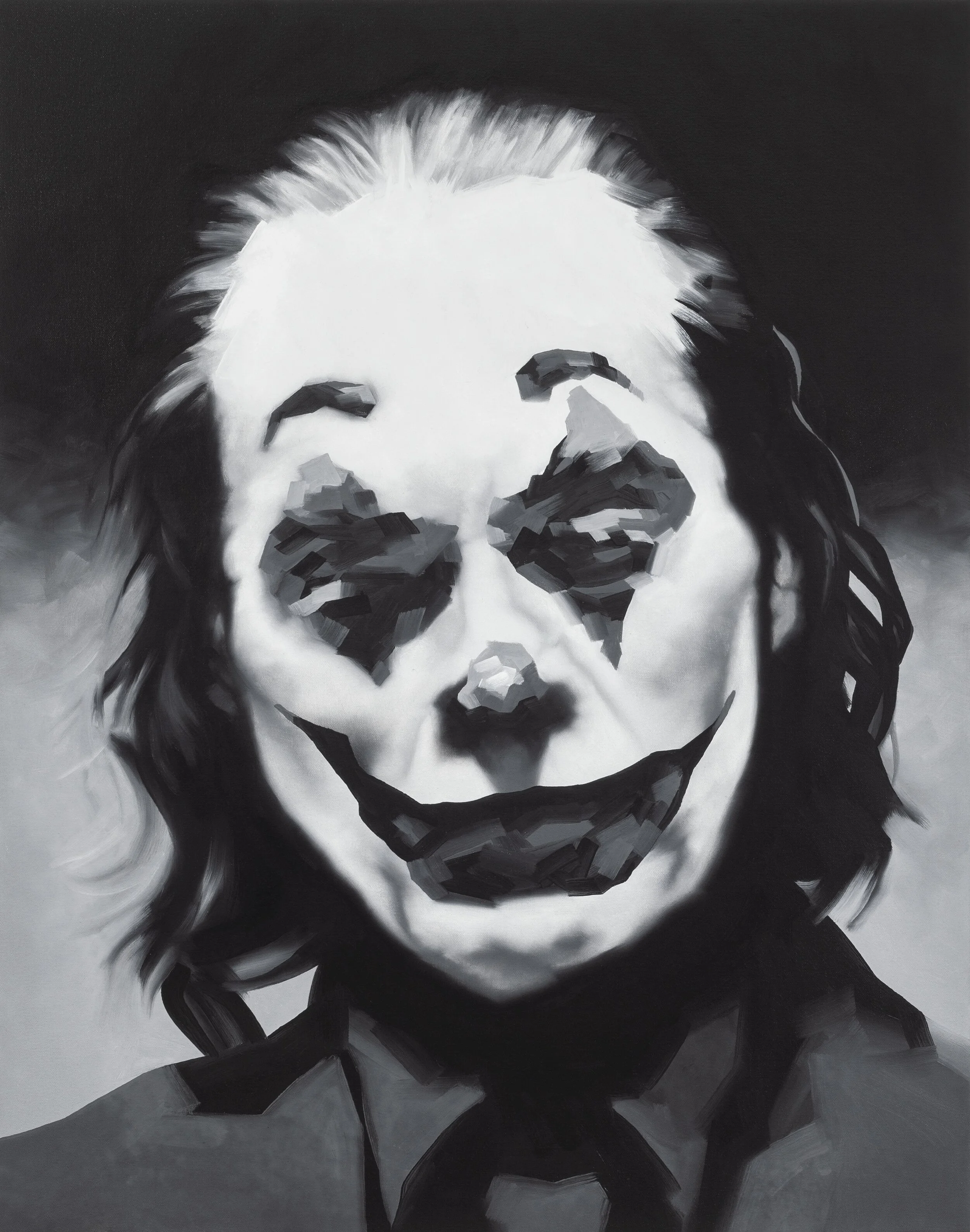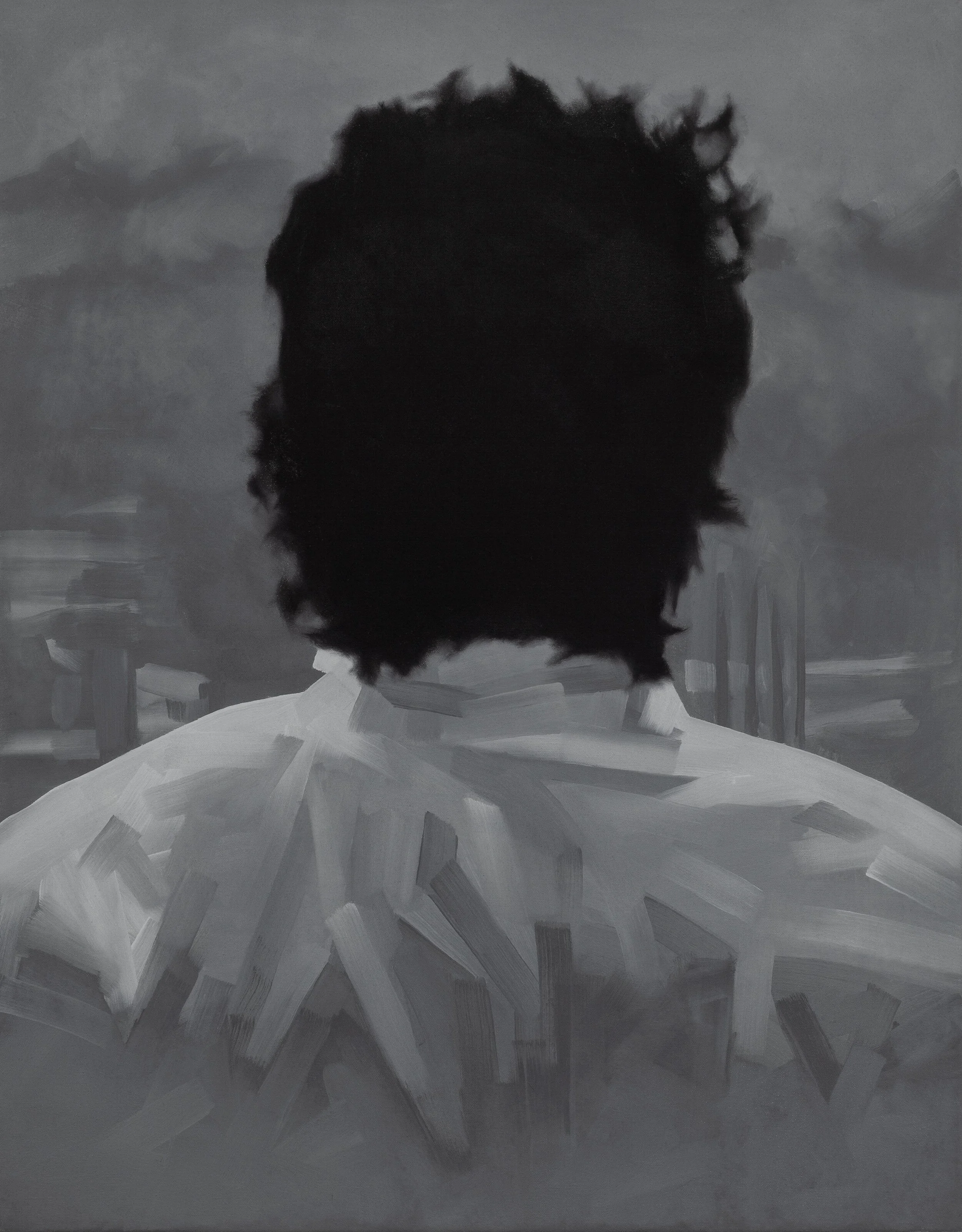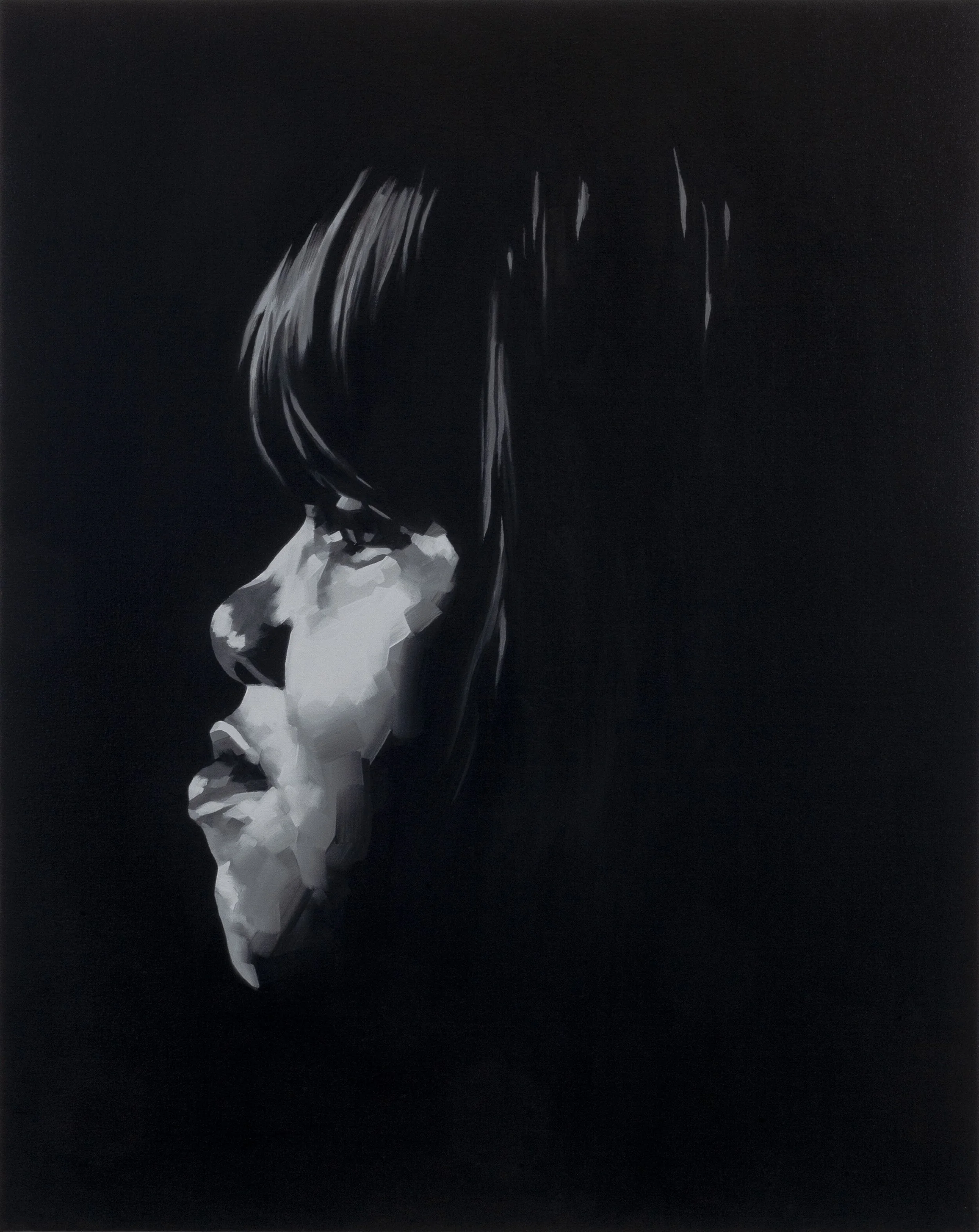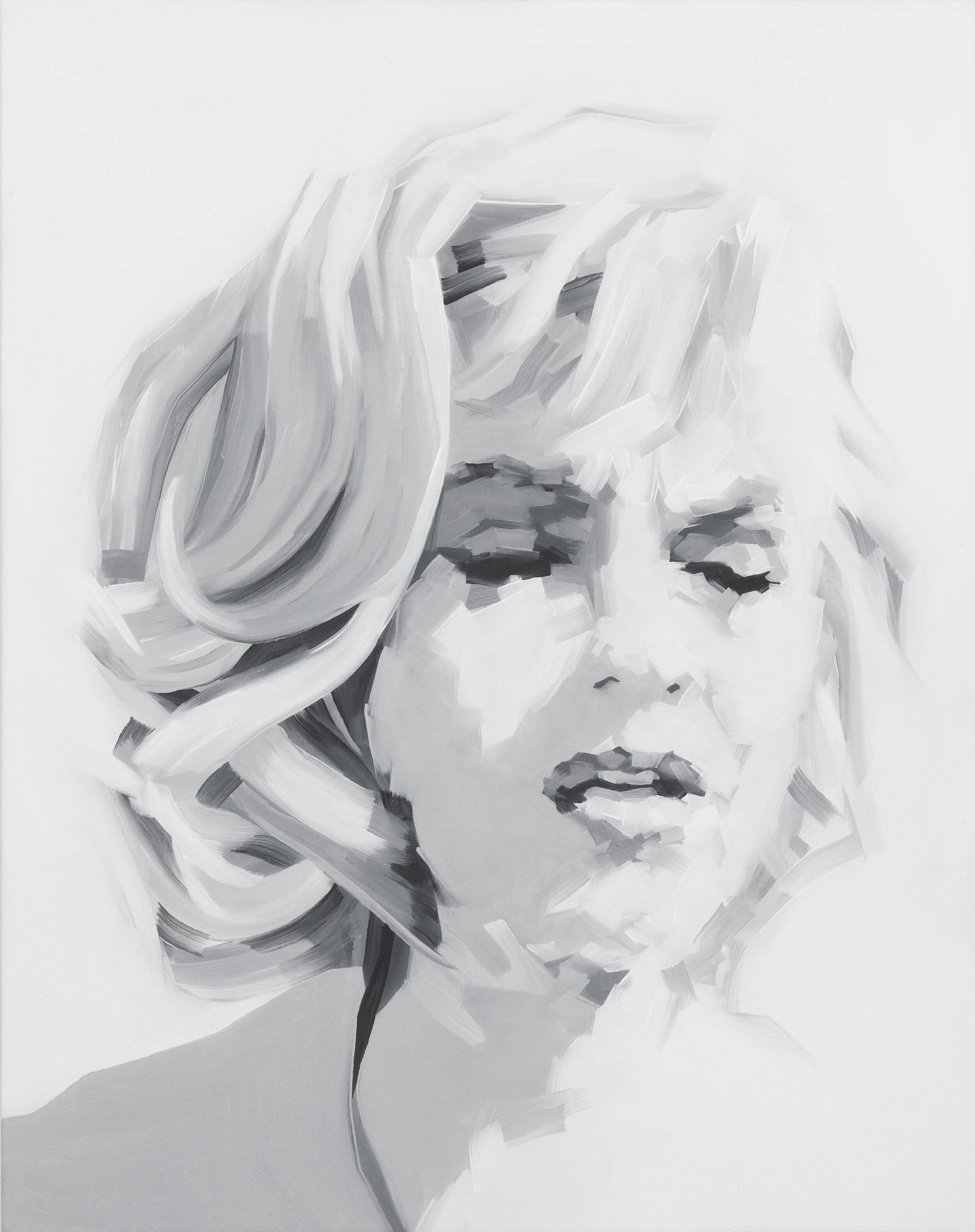It’s Not All Black And White: The art of michael st. john
by Robert Kaniuk
I don’t know art. I don’t know art history or technique or really any of the lingo. It wasn’t until I heard a podcast on Caravaggio that I began looking at it differently. It talked about how the renaissance master would save big money by hiring prostitutes and bums to pose. The dark colors Caravaggio used were because lapis lazuli and some of the holy reds cost more than gold. The Pope paid good money to get Mary in blue, but Caravaggio was talented enough to get away with a barefooted Virgin. It’s also claimed he wore a sword on his hip to tennis matches. This way if he lost to his opponent, he’d just wave the sword around instead of making good on his wagers.
Maybe it’s true, maybe not. Either way, hearing such a wild story about this guy allowed me freedom when it came to art. I decided that I could make up my own story and enjoy art however the hell I wanted. I didn’t have to try to see what some dusty old scholar was telling me I should. I heard the Caravaggio story, searched his work, and I became fascinated with the subjects. Not the Virgin Mother, but the woman who posed. And the guy who played Doubting Thomas? Dirty fingernails, receding hairline and patchy beard––Caravaggio might’ve pulled him out of the Pontine Marshes on a promise of wine.
Art didn’t feel stuffy anymore, so I started exploring. I found Michael St. John through his 2020 show These Days at DeBoer Gallery. I reached out to comment on the work and he responded. He was kind and gracious and we ended up on the phone a few times this past year. We talked about Whitman and Didion and Hunter Thompson and inground pools. I told him I hung drywall and crown molding for a living and he told me about ten years of hell, washing dishes in NYC. We talked art and what he’d been working on during the pandemic.
In St John’s upcoming show The Passions (Sep 2021 - DeBoer Gallery), he looks into the corners of pop culture from the last 60 years or so. Public figures and film roles, movie ephemera and cartoon characters. It's like a nonlinear narrative of his time here. It covers a lot of ground and a range of emotions.
The Passions, Roslyn Tabor (2021), oil on canvas, 24x30 (courtesy of DeBoer Gallery)
This oil painting of Marilyn is titled Roslyn Tabor––her role from The Misfits (1961).
You don’t need to know much about Monroe to come up with your own story.
I see the pressure of body image in an industry built on exploitation and the goddamned Kennedy’s with the world at their disposal. I see anguish and I wonder what would’ve happened if she stayed with DiMaggio.
Michael told me he’d like to think of someone digging this stuff up in a hundred years and saying, ‘What the fuck? What happened back then?’ If I dug this up in a hundred years, and didn’t know the story, maybe I’d see Roslyn Tabor with her mouth slightly opened, eyes closed, exhaling in a moment of ecstasy.
When St. John began The Passions in 2020, he had been looking at the work of Charles LeBrun. LeBrun made etchings called The Human Passions–a series of portraits depicting and labeling human emotions. They include fear, despair, hope, desire, sorrow, admiration and a bunch of others. St. John borrows from LeBrun not only in the title of his upcoming show, but also the subject of human emotion, which comes up a lot in the series. He doesn’t judge the subject or the viewer in his work, he doesn’t label the emotion like LeBrun did. This allows us to take what we find and decide on our own.
These Days, Democracy (Love) (2016), oil on canvas, 24x30 (courtesy of DeBoer Gallery)
From his 2020 show These Days, Michael St. John has this oil painting, Democracy (Love). It is based on Marisol Escobar’s 1962 sculpture, Love (MoMA).
I see marketing shoved down our throats. Subsidizing corn syrup and price-gouging insulin. Capitalism at any cost, even if that means the only restaurant that makes it in your neighborhood is a fucking Applebee’s. I see shareholders giving it to us, the rewards members.
But that's what I think I’m supposed to see, and that’s where I usually get into trouble. I can’t be sure what Escobar’s intention was for the sculpture, or why St. John was inspired to paint it.
The first thing I see is an old fashioned eight ounce Coke bottle. The same ones Sean always had in his cooler. They were all we had left when Philly PD made us crack open and dump the Red Label one hot summer night in 2002. I laugh to myself thinking about how angry the cops were after catching us drinking for the third time in as many hours. And how cool Sean was in his surrender. He poured the beers into a frothy puddle and said that if they had to take us, could they take us to the Roundhouse so we could stop at The Imperial to see Louie after we made bail. The cops called us idiots and said they had better shit to do. We left the Belmont Plateau with a six pack of coke bottles sloshing in a red Coleman cooler.
No matter the intention Marisol or Michael chose for this piece, the power of art is on full display here. It lights a fuse on an old story I had almost forgotten. I remember him and I and how nothing bothered us back then. And I laugh.
The conversations with Michael kept coming back to what is real and what isn’t. How perception is reality and it’s all about where you’re from and what you do for a living; education and struggle; where your hopes are aimed. All of this plays a part in forming our subjective lens. And, as Michael put it: even when people have opposite views on religion or democracy or justice, they probably all watched The Simpsons and know who Honey Boo-Boo is.
The Passions, Daffy Duck (2021), acrylic on canvas,
24x30 (courtesy of DeBoer Gallery)
In Daffy Duck, I think about eating Honey Nut Cheerios on Saturday morning. I’m telling my brother J.C. to turn the tv back to Looney Tunes. He’s switching channels to see if Hulk Hogan can actually bodyslam King Kong Bundy. He didn’t think the Hulkster could do it. I still believed a lot back then. Wrestling and Santa Claus were real, and I had never heard the word divorce.
The Passions, Margot Tenenbaum (2021), oil on canvas, 24x30 (courtesy of DeBoer Gallery)
I see this painting of Margot Tenenbaum and feel resentment. I resent the rich because I’m not. It reminds me of my boss’ wife in South Carolina. Margot has the same perfect hair of a nervous woman who steals her kid’s adderall. She knows something I don’t and can't bear to make eye contact.
Mrs. Bruno stood back and observed everything from her Hilton Head throne. I had a truck and ran a crew of men twice my age. She liked that I spoke enough Spanish to boss them around, but when she noticed laughter and found out I was invited to dinners and Quinceaneras she whispered to her husband that I was spreading a cancer. I was called into the office and told I was an insurance liability. Suddenly too young for a take home truck and foreman position. I was fired.
She said a pimple-faced dropout would never have it better and that I‘d always be a loser. She told me all of this with the smug satisfaction we see on Margot’s face. It hurt. I was seventeen, on my own, with no way to pay the rent. But it taught me how some resentments can be made to work for us. Anger and pain can be nurtured, cultivated, to become something like revenge. I knew I wasn’t worthless and Mrs. Bruno gave me the gift of something to prove.
***
I stood at the docks of the Governor’s Island Ferry and it began to rain. It was chilly for May and I had no raincoat. The ferry would take me to see Michael’s work with DeBoer Gallery at the NADA show. I was looking forward to it, but the boat wouldn’t leave for another hour. By then I’d be cold, wet, and stuck on the island until I was dumped back in Manhattan 2 hours later. Fuck that, I took a cab back to Washington Square, ate a Rueben and drove back to Philly.
I told Michael about this and he laughed. He said he never knew what to do at gallery openings, always felt like he had to put on a face and didn’t blame me for leaving.
The Passions, Patrick Bateman (2021), acrylic on canvas, 24x30 (courtesy of DeBoer Gallery)
This business card is a big deal to Patrick. The thickness, the feel, the color and font were all carefully selected to impress. It’s a mask he wears. This painting tells us everything is ok. I’m Patrick Bateman, Vice President of Pierce & Pierce, and you can trust me.
I get up and put boots on in the morning. When I get to the job, I put on a hard hat. This tells little of my personal life. I show my good side in the mirror but sometimes I catch glimpses in pictures of how the rest of the world sees me. I realize I’m not fooling anyone.
These Days, Democracy (Tony Soprano) (2018), oil on canvas, 24x30 (courtesy of DeBoer Gallery)
This painting, Democracy (Tony Soprano), is also from the 2020 show, These Days (DeBoer Gallery). Unlike Margot, Tony’s gonna look you right in the eyes. He don’t give a fuck. Doesn’t seem embarrassed by the band-aid either. Even if we know it’s from the episode where he faces mortality through a routine mole removal. Cancer scared Tony more than the Feds did.
He has an honest face in this painting. Tired and beaten, oil on canvas. What do I know about which brushes Michael St. John used, which technique he employed, how many hours he spent on it? Those are details, mechanics. I’m here to catch feelings.
I remember when Big Pussy was still alive, before he went fishing. I’m on the couch, under the covers with my cousin’s best friend’s girlfriend. She had left him and would come by every Sunday to smoke weed, watch HBO and fuck. It wasn’t until she brought over Dylan: Live in 66 that I fell in love. I fell in love with both of them that night. She gave me Bob, then left me. That’s what I remember most about The Sopranos. The only perfect love is the one cut short.
The Passions, Arthur Fleck (2021), oil on canvas, 24x30 (courtesy of DeBoer Gallery)
In society, if we don’t understand someone’s behavior, if we don’t know the pain they’re going through, we often ask what is wrong with you? Or we start telling them what they need to do. Like that has ever worked.
We want to be seen, called by our name, made to feel significant. We want to be loved by our fathers.
The Passions, George Roundy (2021), oil on canvas, 24x30 (courtesy of DeBoer Gallery)
In this one, George Roundy is watching his entire life disappear up the road. Because of his choices, everything he’s ever known is gone and George is all alone.
When I first saw this painting, I thought of Molina’s heartbreaking tenor in a verse from What Comes After The Blues (Magnolia Electric Co.):
“Now Noah must’ve had a lot of room on the ark
For all of them broken hearts
Stay with me now old crimson pal
Pain like this will even outlive the dark”
I think about starting over and how scary a thought that is. I did it once in the summer of 2011 when I got out of rehab. Ten years later, I was faced with the same choice. Stay or start over again. The hardest part of starting over, of moving on, is in forgetting all the reasons you wanted to stay.
I’m reminded of the choices I’ve made, the people I’ve hurt, the loss I’ve experienced. And that saying goodbye is rarely on our own terms.
The Passions, Precious (2021), oil on canvas, 24x30 (courtesy of DeBoer Gallery)
In this painting, we see a profile and a couple strands of hair set against a black background.
In any language we can see this is a woman with strength. She has pride, but not the sinful kind. Chin forward, almost indignant, her profile pops through the darkness and says I wish a motherfucker would.
Precious is a shock of spring during a cold winter. Through struggle, as long as we’re drawing breath, there’s hope.
***
Check out Michael St John’s show at DeBoer Gallery (L.A.) in September 2021 and tell me what you see. If nothing else, you’ll see stunning work from an artist at the peak of his craft.
***
Democracy (Love) and Democracy (Tony Soprano) from series “These Days” shown in totality at DeBoer and Pio Pico galleries in Los Angeles 2020
“The Passions” will be shown in its entirety at DeBoer gallery in L.A. September of 2021.
Selections of “The Passions” have been shown at Bill Arning exhibitions in Houston 2020 and in group shows at Ashes Ashes NYC and 56 Henry Galleries in 2021.
Link to episode of Blindboy’s Podcast mentioned in opening:
https://podcasts.apple.com/us/podcast/gander-panderer/id1300577518?i=1000396465126
Michael St. John lives with his beautiful wife in Massachusetts where he makes art.
Rob Kaniuk is a union carpenter in the city of Philadelphia.

